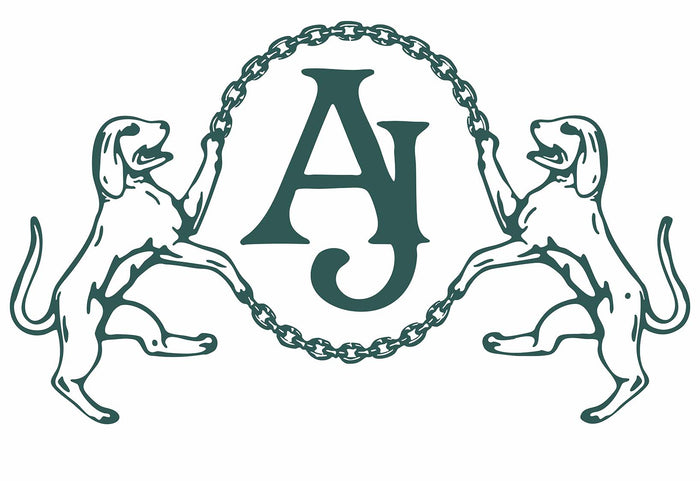Victorian wedding jewellery transcended mere ornament to become repositories of memory, emotion, and intimate connection. The incorporation of deeply personal materials – hair, teeth, photographs, and miniatures – transformed jewellery into biographical artefacts that documented relationships and preserved physical traces of loved ones. This tradition, influenced by German commemorative customs through Prince Albert and fundamentally altered by his death in 1861, created categories of sentimental jewellery that challenged conventional boundaries between celebration and mourning, presence and absence, joy and grief.
The German Origins of Sentimental Jewellery
Prince Albert's Germanic heritage introduced Queen Victoria to commemorative jewellery traditions unfamiliar in Britain, establishing practices that would define Victorian sentimental jewellery.
Tooth Jewellery: From Curiosity to Custom

The setting of infant teeth in precious ornaments, common in Germany at this date, appeared shocking to British sensibilities yet quickly gained royal approval. The enamelled gold thistle brooch incorporating Princess Victoria's first tooth, shed in Scotland in 1847, measuring 2.7 x 2.1cm, exemplified this tradition. The Queen noted that Princess Louise had "a brooch just like it made out of the same stone," establishing tooth jewellery as a family custom.
The 1864 fuchsia pendant and earrings by R. & S. Garrard, set with milk teeth in gold and enamel, demonstrated the evolution of this practice. The technical challenge of setting fragile teeth within delicate floral designs required exceptional skill, whilst the choice of fuchsia – a flower suggesting graceful beauty – softened the potentially macabre aspect of the materials.
Hair Jewellery and Love Tokens
Victoria begged a lock of Albert's hair four days after their betrothal, putting it into a modest glass locket and wearing it "night and day" according to her journal. This practice of incorporating hair into jewellery, whilst not exclusively German, took on new significance through Albert's influence.
The gold chain bracelet with five enamelled hearts, listed among Albert's gifts on 21 November 1846, incorporated the children's hair. Victoria's portrait shows her holding it so it almost touches another bracelet with the children's hair, "making plain the importance to her of her husband and family." By 1857, when Princess Beatrice was born, the lockets numbered nine, each addition being detailed in the archives, creating a wearable family record.
Miniature Portraits as Wedding Jewels
Miniatures of loved ones set as jewels created portable galleries of affection that accompanied the wearer through daily life.
The Secret Portrait Tradition

John Partridge's 1840 portrait of the Queen, commissioned as a Christmas present for Albert, reflects jewel tastes incorporating both a heart and a miniature, "full of messages for Albert." The bracelet miniature shown includes Albert's portrait of 1839 by Ross, set in a gold bracelet clasp surrounded by diamonds with brooch attachment.
Franz Xaver Winterhalter's 1847 portrait of Victoria, known as "the secret portrait" because it was contrived with difficulty as a surprise for Albert, shows the Queen wearing multiple miniature jewels. These pieces functioned as private communications between spouses, their meanings fully understood only by giver and recipient.
Technological Innovation in Miniatures
William Essex's technique of copying miniatures for setting in jewellery revolutionised portrait jewellery production. His copy of Ross's portrait of the Princess Royal as a baby was "ruthlessly cut up" for a brooch showing her with angel wings set with diamonds, emeralds, and rubies, holding a small gemstone. This transformation of portraits into jewelled fantasies created new categories of commemorative jewellery that merged realism with symbolism.
Photographic Jewellery: Modern Sentiment
The integration of photography into jewellery from the 1850s represented a revolutionary merger of technology and tradition.
Early Photographic Pieces
On her birthday in 1858, Victoria received "a very small photograph of the Princess Royal in her marriage dress, set in gold with a black velvet band." This piece represented cutting-edge technology – photography was barely two decades old – incorporated into traditional jewellery forms. The combination of modern imagery with conventional settings created pieces that were simultaneously innovative and familiar.
Mass Production and Democratisation
Photographic jewellery democratised portrait jewellery, making personalised pieces accessible to middle-class consumers. Unlike painted miniatures requiring skilled artists, photographs could be produced quickly and affordably, then set into standardised lockets and brooches. This accessibility spread sentimental jewellery traditions throughout society, establishing practices that persist in modern photo lockets.
Natural Materials and Organic Incorporation
Beyond hair and teeth, Victorian sentimental jewellery incorporated diverse organic materials that carried personal significance.
Pressed Flowers and Botanical Specimens
Flowers from wedding bouquets, preserved under crystal or in resin, created lasting mementos of specific occasions. The technical challenges of preserving delicate petals whilst maintaining their colour required innovative techniques, including chemical treatments and careful environmental control. Wedding flowers thus transformed from ephemeral decorations to permanent jewelled memories.
Wood and Seeds
Wood from significant trees – the oak where a proposal occurred, yew from a churchyard – appeared in Victorian jewellery. Seeds, particularly those from wedding bouquets, were set like gems, their potential for growth symbolising the fertility and future promise of marriage. These materials required special treatment to prevent decay, leading to developments in preservation techniques that influenced museum conservation practices.
The Transformation After 1861
Prince Albert's death in December 1861 fundamentally altered the character of sentimental wedding jewellery, introducing memorial elements that would define late Victorian practice.
From Celebration to Commemoration
With Albert's death, the character of jewel gifts changed dramatically. Daughters were furnished with trousseaux incorporating memorial elements, whilst granddaughters received memorial pendants featuring their unknown grandfather. The little-known full-face portrait of the mourning Queen shows her wearing dense black with a black-bordered handkerchief, her jewellery now serving memorial rather than celebratory functions.
Hybrid Forms: Wedding and Mourning

Late Victorian wedding jewellery often incorporated mourning elements, creating hybrid pieces that acknowledged loss whilst celebrating new beginnings. Black enamel borders on wedding lockets, jet accent stones in engagement rings, and hair from deceased relatives in wedding brooches created complex emotional objects that recognised life's intertwining of joy and sorrow.
Symbolic Languages and Hidden Meanings
Victorian sentimental jewellery employed complex symbolic languages that encoded private meanings in public ornaments.
The Language of Flowers
Floral symbolism in wedding jewellery conveyed specific messages. Lily-of-the-valley, Victoria's favourite flower (she sent them to be laid on General Grey's grave), signified return of happiness. Orange blossom meant purity and fertility, roses indicated love's varying aspects depending on colour, and forget-me-nots promised remembrance. Combining different flowers created complex messages understood by contemporary viewers.
Gemstone Symbolism
Gemstones in sentimental jewellery carried coded meanings. The large sapphire in Victoria's wedding brooch symbolised fidelity and heaven's blessings. Pearls, despite associations with tears, appeared frequently in wedding jewellery as symbols of purity. Garnets suggested constancy, emeralds hope, and diamonds eternal love. Acrostic jewellery, where gemstones' first letters spelled words (Diamond, Emerald, Amethyst, Ruby = DEAR), created secret messages hidden in plain sight.
Technical Challenges and Innovations
Creating sentimental jewellery required solving numerous technical problems that advanced jewellery manufacture.
Preservation Techniques
Incorporating organic materials demanded new preservation methods. Hair required treatment to prevent decay and maintain colour, teeth needed sealing to prevent cracking, and photographs required protection from light and moisture. Jewellers developed specialised compartments with airtight seals, crystal covers that filtered harmful light, and chemical treatments that stabilised organic materials.
Mixed Media Challenges
Combining materials with different properties – hard and soft, organic and inorganic, stable and fragile – required innovative setting techniques. Flexible mounts accommodated thermal expansion, cushioned settings protected fragile materials, and modular construction allowed for repair without complete disassembly. These innovations influenced broader jewellery manufacture, establishing techniques still used in contemporary mixed-media jewellery.
Social and Cultural Impact
Sentimental wedding jewellery shaped Victorian emotional culture, providing acceptable outlets for feeling in an otherwise restrained society.
Emotional Expression
In a culture that valued emotional control, sentimental jewellery provided sanctioned ways to express deep feeling. Wearing a locket containing a spouse's hair demonstrated devotion without verbal declaration. Displaying a child's tooth in a brooch proclaimed maternal love through material culture rather than potentially embarrassing emotional display.
Memory and Identity
Sentimental jewellery created portable archives of personal history. A woman might wear jewellery incorporating materials from multiple family members, carrying her entire emotional world on her person. These pieces shaped identity, reminding wearers of relationships and responsibilities whilst communicating social position to observers.
Collecting and Preserving Sentimental Jewellery
Victorian sentimental jewellery presents unique challenges for collectors and conservators due to its mixed media composition and emotional significance.
Authentication Challenges
Determining authenticity requires understanding both technical and cultural aspects. Genuine pieces show appropriate wear patterns, period-correct construction techniques, and materials consistent with Victorian practice. However, the deeply personal nature of these pieces means provenance often provides the most reliable authentication, with family histories and documentation crucial for establishing genuineness.
Conservation Ethics
Conserving sentimental jewellery raises ethical questions about preserving original materials versus ensuring stability. Should deteriorating hair be replaced or stabilised? How should faded photographs be treated? These decisions require balancing historical integrity with practical preservation, often consulting with descendants when possible.
Legacy and Contemporary Relevance
Victorian sentimental wedding jewellery established precedents that continue to influence how we understand jewellery's emotional significance. Modern memorial jewellery, incorporating ashes or DNA, represents technological updates to Victorian practices. Contemporary artists creating jewellery from personally significant materials consciously or unconsciously follow Victorian precedents.
The Victorian innovation of transforming intimate materials into beautiful objects challenged distinctions between sentiment and art, private and public, mortal and eternal. Through their cultivation of sentimental jewellery traditions, Victoria and Albert created new ways of understanding jewellery not merely as decoration but as material manifestation of human connection. This legacy – the idea that jewellery can and should carry deep personal meaning – remains perhaps the most enduring contribution of Victorian culture to contemporary jewellery practice.

